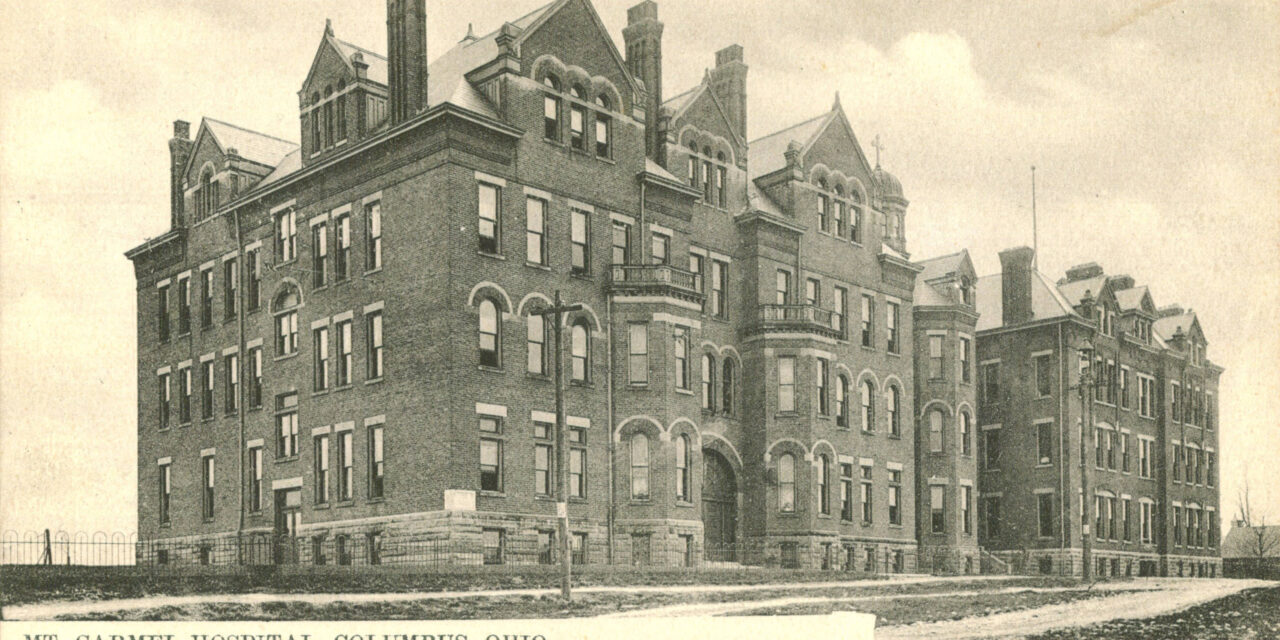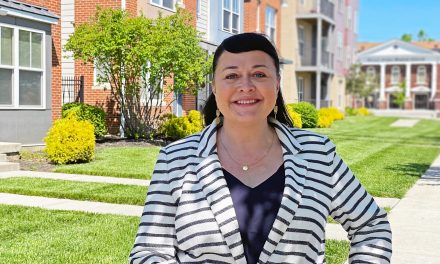Podcast: Play in new window | Download
Subscribe: RSS
Tim Fulton 00:09
Welcome to the confluence cast presented by Columbus underground. We are a weekly Columbus centric podcast focusing on the civics, lifestyle, entertainment, and people of our city. I’m your host Tim Fulton. This week, shared experience enhances our sense of space. Over the summer I had the opportunity to attend the annual Franklinton Board of Trade gala held a cosign that night’s keynote speaker was the well known Central Ohio journalist, legislator and author Michael Curtin. His remarks that evening struck a chord with me and I asked him to recite them again here for Confluence cast listeners, Mike’s speech touches on the impact Franklinton had on him, the local figures who ascended in their careers despite humble beginnings, and the role that Franklinton has had in molding the broader Columbus community. I hope that this episode instills in listeners what it did for me, a greater sense of the city’s rich history, and our opportunity to find a sense of place in that history. Mike was also kind enough to stick around for a more in depth interview. Tune in next week to hear that conversation. You can get more information on what we discussed today in the show notes for this episode at the confluence cast.com. Enjoy the episode
Mike Curtin 01:32
thank you and good evening. It’s a privilege to have the opportunity to share some observations on Franklinton. Past, present and future with so many who have been and remain devoted to its well being. Unlike the mystics in the poet’s I’m not able to recall a moment of my birth. But I was told by my saintly mother that the momentous event occurred just down the street at Mount Carmel hospital at the time, October 1951, our one and only Mount Carmel hospital. So by my reckoning I have a modest or at least a literal claim to call myself a son of Franklinton even though I did not grow up in the neighborhood. My parents first home in 1947 was in the heart of Franklinton a rental at 285 South Cypress Avenue. But by the time I came along four years later, the family had moved to West Third Avenue, although still just four miles away from the many adolescent and teenage attractions of Franklinton. For me, there was no greater attraction than jet stadium. For me, nothing could be sitting high up in the nosebleed seats overlooking Mount Calvary cemetery, and the downtown skyline beyond under the stars watching my Columbus jets take on the Toronto Maple Leafs, the Rochester Red Wings, the buffalo Bisons watching up and coming Willie Stargell, Don clendenen and Bob veal play their way up to the big club, the Pittsburgh Pirates in my world, there was no better way for a kid to spend a summer night. A close second was going with my dad to Central High School for Friday night football game against Aquinas, his alma mater, city league rivals central high school not only had a great athletics tradition, Central had the coolest leather jackets in the world, black and red with that badass pirate emblem as a youth. My favorite experiences in Franklinton involves sports. As teenagers my brother Bob and I were invited to play on our dad’s softball team. We played those games under the lights on Friday nights at Sunshine Park dodge park since 1985, playing under the lights under the lights making running catches in the outfield catches those old men never would have dreamed of making. We were legends in our own minds. A few years later playing on a team with guys our own age. In our early 20s. We played at McKinley Park as the Coltrane’s rumbled by on those elevated tracks. In my youth I was no spendthrift I carefully managed my savings account built from years of earnings from my paper out and from bussing tables. Some of my friends accused me of still having my first communion money set I threw around nickels as if they were manhole covers. But once in a while in a desperate bid for a date. I’d spring for a couple of tickets to a big name concert at Veterans Memorial Auditorium. The doors the who? The Moody Blues The truth was, I hated those concerts. Even as a teen, I felt a strong fiduciary obligation to my eardrums. The long suffering Sharon Curtin, nearly 48 years of suffering now will testify to my pension for turning down the volume, right after she’s turned it up. A truth I can never disclose as a teen in the era of hard rock was that I much preferred the smooth notes of Frank Sinatra, and Nat King Cole. I was your classic teenage oddball. These are among my youthful memories of Franklinton good memories. For quite some time writers and geographers have explored the role of memory, what we remember about our experiences within a particular tract of land, in shaping how we think about that landscape. In recent years, there have been so many articles, books and academic papers written on what is called sense of place, that sense of place has become a literary genre unto itself. The relationship between people and bear setting what it feels like to be somewhere, a sense of connection within certain boundaries, a sense of possibilities. Some of you have belonged to Franklinton, for about as long as you can remember, some of you adopted Franklinton, only recently, and many perhaps most fall somewhere in between. All of you have your own memories of this neighborhood, your own stories. And that has been true for as long as Franklinton has been around longer than any other neighborhood in Columbus and Central Ohio. After graduating in 1973, from Ohio State’s school of journalism, and securing a job at the dispatch, I had the great good fortune over the next four decades to study my city, and many of its neighborhoods, including our original neighborhood. I met and wrote about quite a few sons and daughters of Franklinton and I loved capturing the color and the humor in their stories. Harold Cooper and Mike Dorian, fellow county commissioners for 16 years were both sons of Franklinton. Harold grew up on Dana Avenue, and was nine years old in 1932, when Red Bird stadium was built on mound Street, just a few blocks from his home. Harold love to tell the story of sneaking into ballgames, and occasionally getting caught. After being caught one time too many. George Trotman, president of the Redbirds offered to keep him out of trouble by giving him his first unpaid job at the ballpark. A job Harold would remember for decades with a big smile and plenty of mustard and relish his job Harold explained. Using a vinegar rag to wipe the mold wipe the mold off the hot dogs before they were dropped into the boiling pot. from that humble start in baseball, Harold went on to become commissioner of the International League, one of the more influential positions in our national pastime. his longtime running mate, fellow Commissioner Mike Dorian grew up a half mile away on Campbell Avenue after his dad landed a job in 1937 at the old David Davies meatpacking plant, a fine athlete, Dorian starred in all three major sports at Holy Family High School on West Broad Street. In 1948, his senior year, he won the citywide Agganis club, scholar athlete award. Dorian played on men’s Fastpitch softball teams well into his 40s and he was as gifted a storyteller as Harold Cooper. My favorite was about his memories of going downtown to the big house to play against the Ohio penitentiary hurricanes. In one interview I had with him, Dorian remarked they had some fine ballplayers. They did not have a traveling squad. All their games were strictly home. Then there was Dewey Stokes, a documented juvenile delinquents who became a diaper delivery man for general diaper service. He explained this job with a smile. I got to see 550 women every day. Who wouldn’t like that? Do we eventually overcame his juvenile record and the diaper job after being rejected twice on his third application. He was accepted into the Columbus Police Academy and became a cop by In 1980, he was president of the local chapter of the Fraternal Order of Police. And by 1987, he was the nation’s top cop, president of the National fop, and getting invitations to the White House. Some of the guys from the old neighborhood could not believe it. Some could do, we always had a plan. In Mind newspaper experience, Franklin had a way of producing some of Central High was most colorful, and accomplished characters, especially characters who overcame modest means to make a significant impact on our city. Such stories, such local folklore, plays its part in creating shared experience. And shared experience contributes so much to sense of place. And other components. A very sizeable component of sense of place is the role of adversity, the role of hardship and shared effort to overcome adversity. For Franklinton. The biggest source stories of adversity, of course, were the periodic floods, especially the disastrous floods of 1913 and 1959. In this crowd, a crowd of Franklinton, folks, no elaboration is needed. Anyone who knows anything about this neighborhood long ago learned about the floods, and the long, very long road back. less widely known is Franklinton. His role as the birthplace of the modern freeway system in central Ohio. Construction of the Sandusky Street Bridge over the Scioto River in 1948, was the beginning. Then in November 1951, a city bond issue of $5.8 million and a county bond issue of $2.5 million were overwhelmingly approved by voters, both with over six 70% of the vote to launch Columbus into the expressway era in selling the bond issue to voters, city fathers pointed out that vehicle registrations in Franklin County had risen from 60,000 in 1925 to 130,000 in 1950. And we’re certain to continue increasing rapidly. They were right of course. Today, Franklin County has more than 1.1 million vehicle registrations. The Regional Planning Commission had warned of economic strangulation from inadequate roads if expressways were not built. The dispatch published a pre election article explaining what an expressway is to readers unfamiliar with the idea of a limited access road with no traffic lights. With establishment of the Federal Highway Trust Fund in 1956. Freeway construction was off to the races. For Columbus. That meant construction of the first leg of the inner belt, a West leg that hugged the western edge of Holy Family School at Broad in Sandusky streets. On October 13 1959. Nine months after the flooding disaster, Mayor M E Sensenbrenner dedicated the new one to three fourths mile section of freeway. Holy Family School dismiss classes so the children could watch the ribbon cutting ceremony from the new Broad Street Bridge. They were too young to understand the long term consequences of the freeway dividing their neighborhood. The next year 1960 Holy Family School stopped accepting new students in the last graduates of Holy Family high school received their diplomas in 1964, bringing an end to more than a half century of schooling on that site. Over the next two decades, neighborhoods throughout Central Ohio learned of the mixed blessings of freeways. By the end of 1976 Franklin County had nearly 110 miles of expressway, slicing through neighborhoods in every direction. But no other neighborhood in our city’s history would experience anything close to the level of disruption and disinvestment endured by Franklinton. Widespread disinvestment, driven by building restrictions adopted for federally designated floodplains. Although city leaders for decades recognized the need for a flood wall, not until 1988 did Congress approve its construction and commit to provide three fourths of the funding at long last The flood wall was completed in 2004. A tip of the cap to our engineer friends here tonight from Burgess and Napl a completion of a flood wall that enabled the slow, steady rebirth of Franklinton. A rebirth that next year will mark its 20th anniversary. This narrative began with a reflection on memory, and its role in sustaining a sense of community. In the hard work of neighborhood revitalization, few things are as powerful as collective memory stories about a neighborhoods past our own stories, and those handed down to us from our predecessors, shaped the way we think of a neighborhood’s present, and its potential future. And collective memory is almost always linked to neighborhoods, anchor institutions, its schools, parks, historic buildings, and places of public assembly. That’s why it was so important not just to individuals but to our entire city. That Central High School was incorporated into the design of the new co Cy, which opened its doors in 1999. Not just because of fond personal memories of Central, but because of the fact that central with its outstanding and inspiring architecture, represented and still represents a new vision for our city that was laid out in detail in the 1908. Columbus plan, the centerpiece of our city’s participation in that eras city, beautiful movement. Central High School in 1925, was the first structure built along this out of river in conformance with the guidelines of that mold 1908 plan. That vision that plan is not something just to be viewed under the amber glass in a museum. It’s a vision to be understood today and well into the future. The Philosopher’s teach us we don’t study history, merely to learn what happened. We study history, to learn who we are, who we are, like Central High School. Franklinton is blessed with many marvelous historic structures and locations that teach valuable lessons that guide us in the never ending study of who we are. Just next door, is the fabulous Toledo and Ohio Central Railroad Station. Fabulous architecture, fabulous history. Members of this audience can cite one anchor institution after another and its meaning its story. Franklinton today is blessed by a trinity of spirits, a spirit of knowing and appreciating its heritage, a spirit of ongoing discovery, and a spirit of continuing renewal. The pace of renewal is accelerating. One success inspires another. It’s always dangerous to cite only one example of current renewal among so many deserving candidates, but I will beg your forbearance. Recently, we read the news of Woda Cooper, beginning the redevelopment of the former Starlene Middle School, the Old West High School, converting it to 45 affordable apartments, all the while while restoring the slate, chalkboards and tin ceilings of that school, affordable housing and historic preservation in the same package. I could sense the broad approving smiles from above, from Carol Stewart in Jan Warner. And God knows how many other tireless advocates for Franklinton who went before us, paving the way for today’s successes. So many of you have been in are engaged in the hard work of renewal of rebuilding our city’s original neighborhood, building on decades of hard work that went before and all the while providing valuable lessons of who we are for all of your invaluable efforts. Thank you. And thank you for allowing me to be part of your evening
Tim Fulton 19:39
thank you for listening to the confluence cast presented by Columbus underground. Again, you can get more information on what we discussed today in the show notes for this episode at the confluence cast.com Please rate subscribe, share this episode of The confluence cast with your friends, family, contacts, enemies, your favorite legislator. If you’re into Since sponsoring and Confluence cast get in touch with us, we can be reached by email at info at the confluence cast.com Our theme music was composed by Benji Robinson. Our producer is Philip Cogley Special Thanks this week to Mike Curtin. I’m your host, Tim Fulton. Have a great week.





